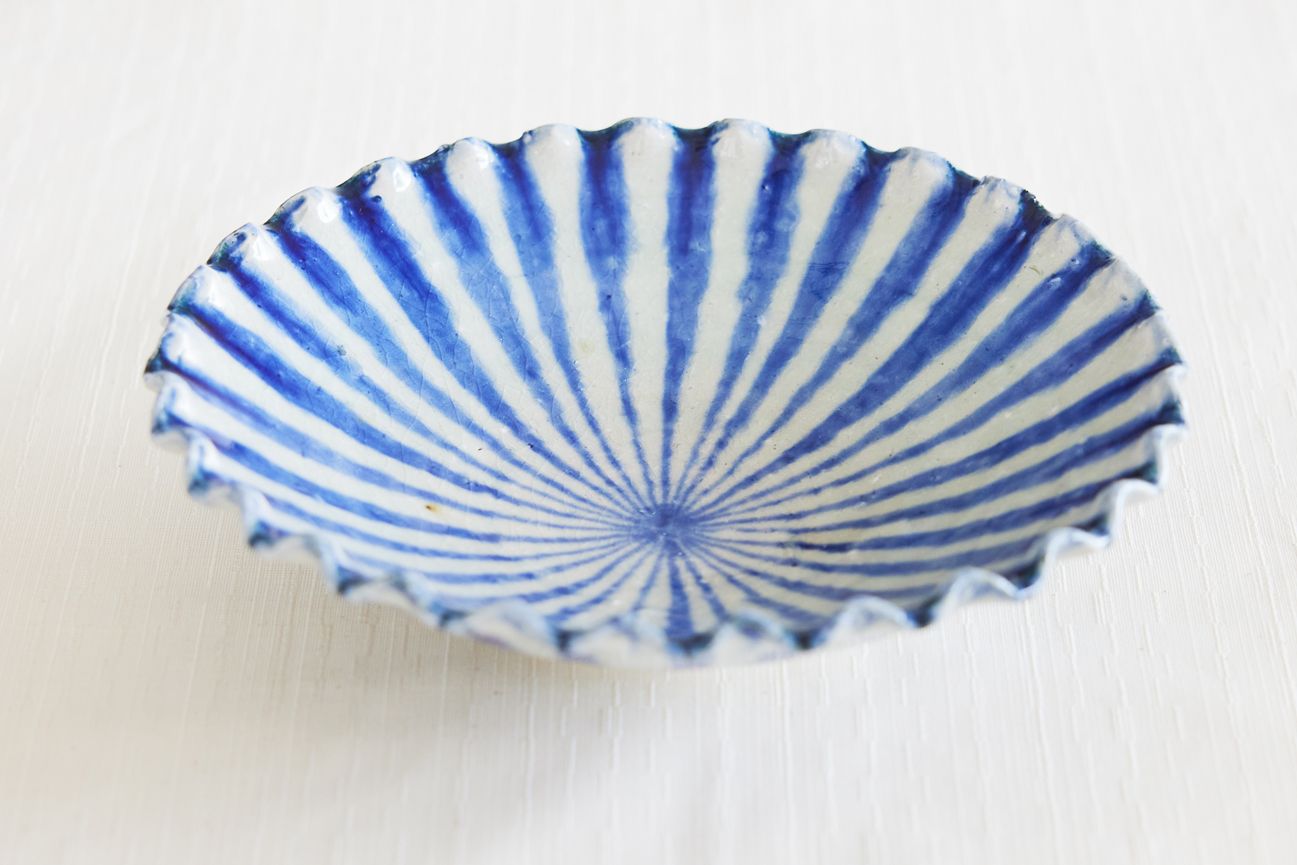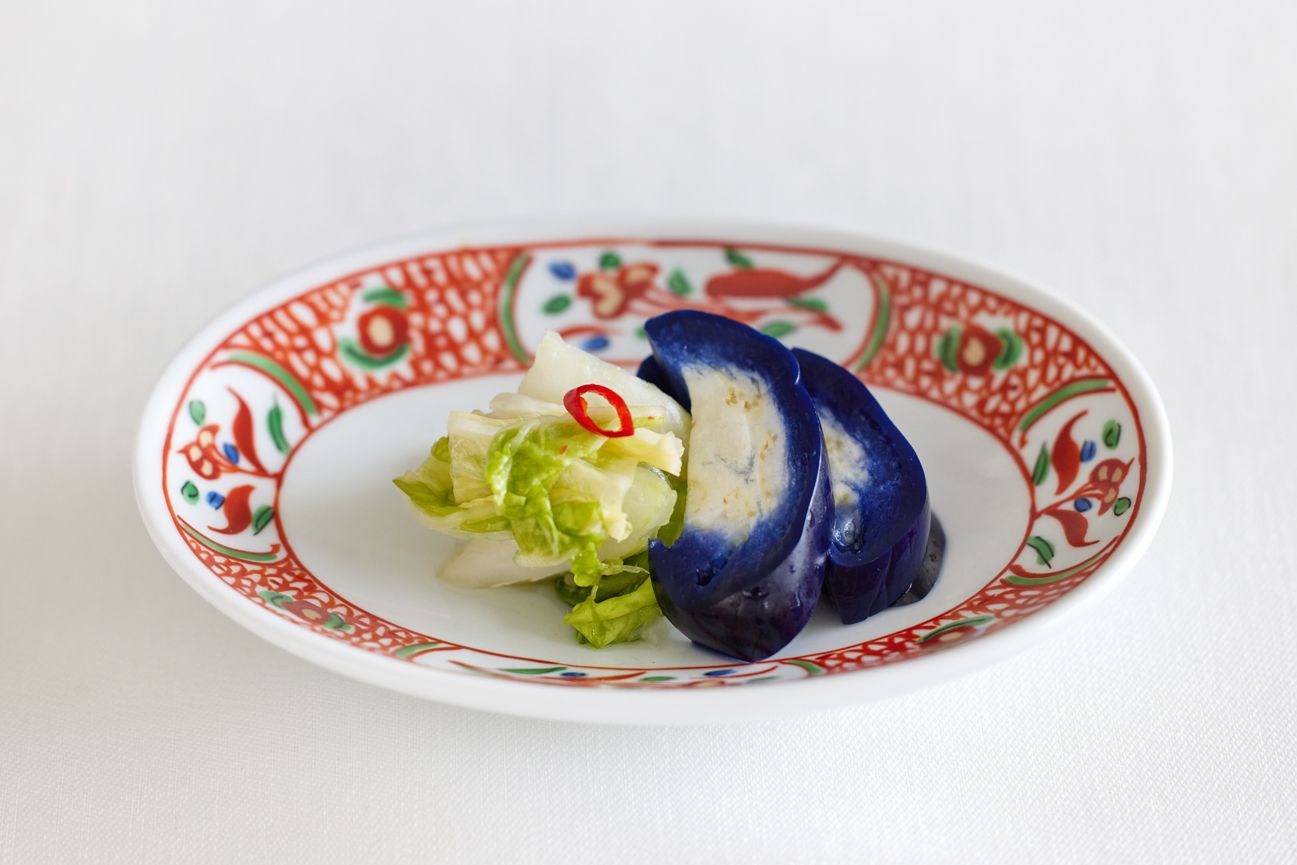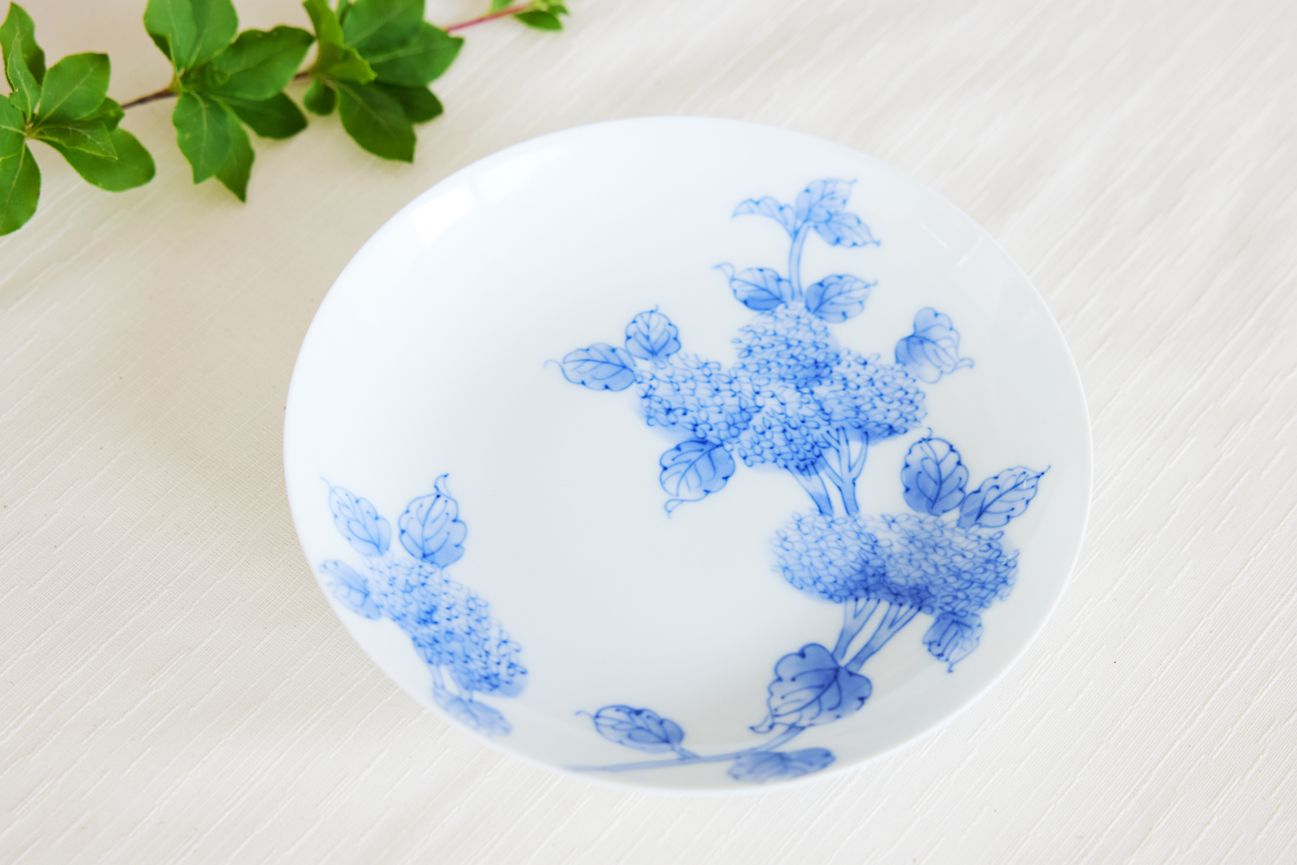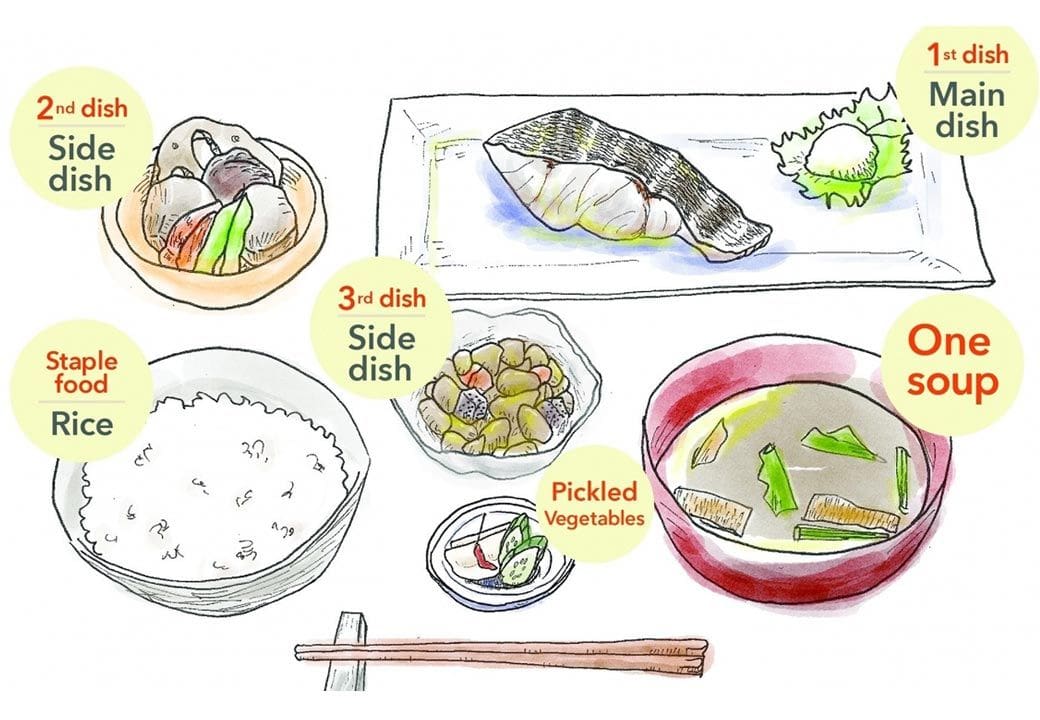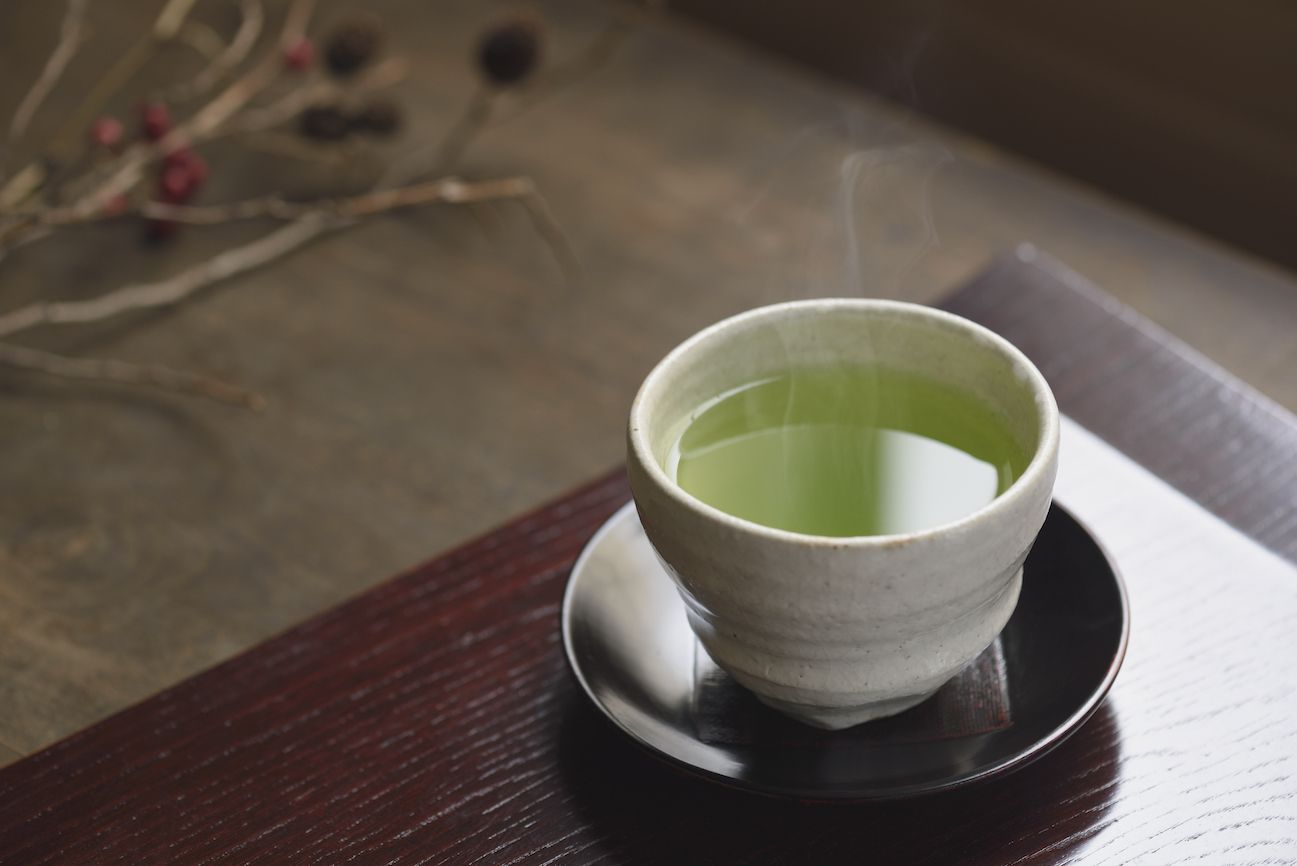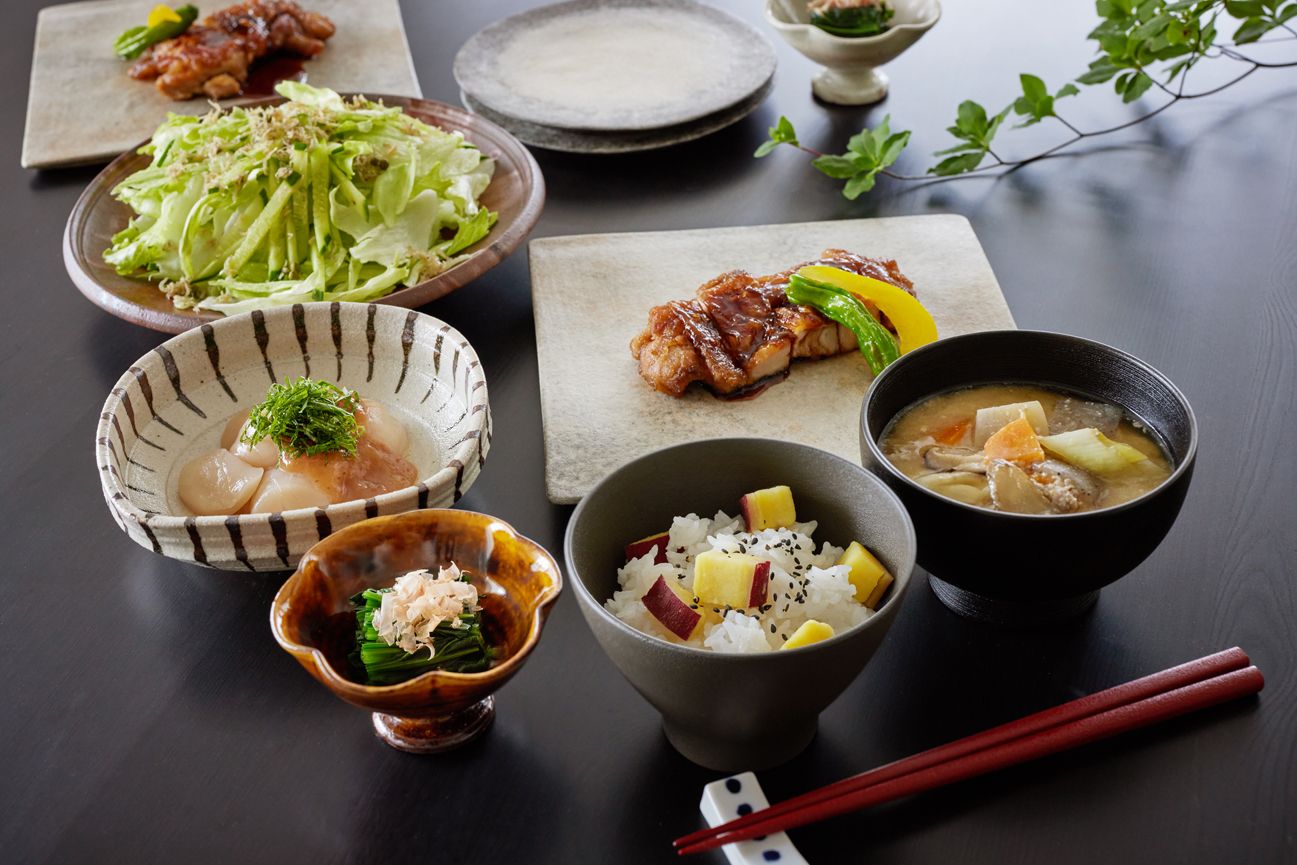
Serving a Delicious Dining Experience with a Rich Array of Tableware Borne of Japanese Beauty
With its roots in earthenware first crafted in the Jōmon period roughly 10,000 years ago, Japanese tableware has developed alongside the tea ceremony and a number of other cultural practices and properties. Here, we introduce pieces of tableware that are easy to incorporate on the everyday dinner table and how to best serve Japanese food.
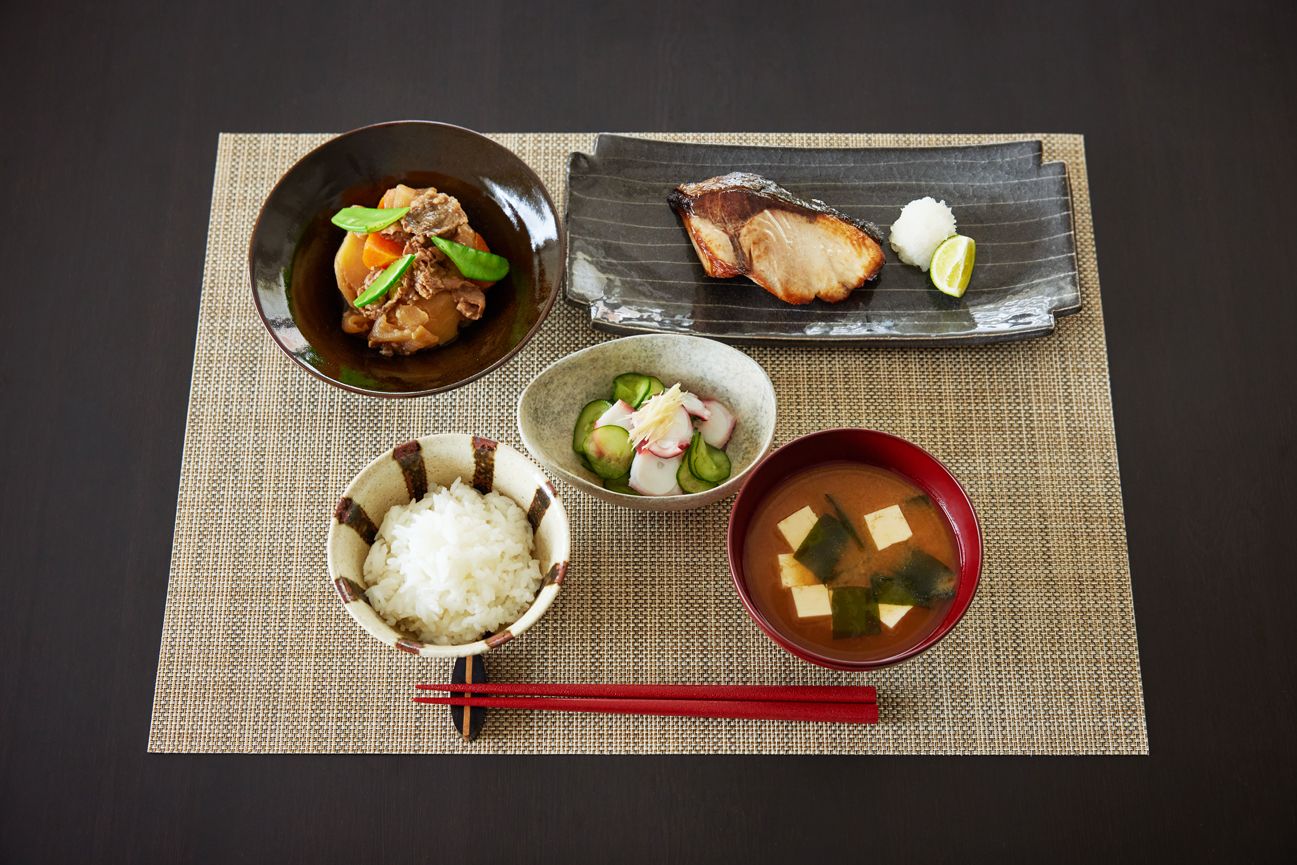
“One soup, three dishes” forms the foundation of Japanese cuisine, providing a nutritionally balanced meal that includes protein, vitamins, and minerals. Chopsticks are placed immediately before you, with the rice bowl to the front left, the soup bowl to the front right, the main dish to the upper right, a side dish to the upper left, and a smaller side in the middle. Soup bowls, rice bowls, and smaller sides are taken in the hand to eat, while the main dish, larger side, and anything on long rectangular plates that are hard to lift is eaten from the table.
The history of Japanese tableware dates back about 10,000 years ago to the decorative earthenware of the Jōmon period, which has developed into its current form over many eras. Today, as lifestyles change, diverse ways to enjoy food that incorporate Western tableware have spread. However, amidst these changing times, there are certain practices that Japanese people continue to maintain and hold dear—that of feasting with the eyes, holding a dish in their hands and eating with chopsticks, and enjoying bowls and plates that match the season. That is why Japanese tableware is made with such an emphasis on the tactile experience, texture, and mouth feel. The word ichiju-sansai (one soup, three dishes) is used to describe the basic style of Japanese cooking. It refers to a meal consisting of rice, soup, a main dish, a side dish, and a smaller additional side. The different types of Japanese tableware you see are generally items meant for these five dishes.
First is the rice bowl, used to serve rice. As an everyday item, most households have special bowls for each member of the family. People choose their preferred bowl based on the size and how the texture feels in hand. Next is the soup bowl for miso soup, generally made of insulated lacquerware. Japanese people drink miso soup straight from the bowl, so mouth feel is key. Medium-sized plates of about 15 to 21 cm are used for main dishes such as meat and fish, with round or square plates used depending on the dish being served. Small and medium-sized bowls are for simmered dishes and other sides, while small bowls and plates are selected for marinated or dressed vegetables and arranged in a well-balanced manner. By mixing round and four‐sided tableware on a wooden tray or luncheon mat and with color combinations in mind, you can create a visually beautiful and rich dining environment.

Rice cooked with seasonal ingredients. Rice bowls are used every day, so focus on choosing one that is easy to use and to your liking.

Highly nutritious tonjiru pork miso soup with root vegetables like taro, burdock root, and carrots. Wooden lacquerware is suited to soups as it does not conduct heat easily.
Once you have assembled all of the basic items needed for a one soup, three dish meal, you will want to start having some fun adding variety to your materials, patterns, and accessories. Using chopstick rests can let you take time to enjoy your meal even if you are dining alone, and take-out will taste all the better when served with your favorite tableware. Small plates 12 cm or less in diameter can be used for a wide range of purposes aside from just small sides, be it for soy sauce, other condiments, or for splitting food. Slowly putting together a collection of different designs is pure delight.
In Japan, there is a custom of sharing food served on a large platter at the family dinner table or when entertaining guests. These platters are around 30 cm in diameter and are used to serve up simmered dishes or tempura, sashimi, or salad in a visually appealing way, with each person taking their own portion. When plating, the key is to place food in a heap in the middle of the platter and leave space around it to show off the dish. Serving seasonal ingredients in a dressed-up way is also sure to spark conversation at the table.
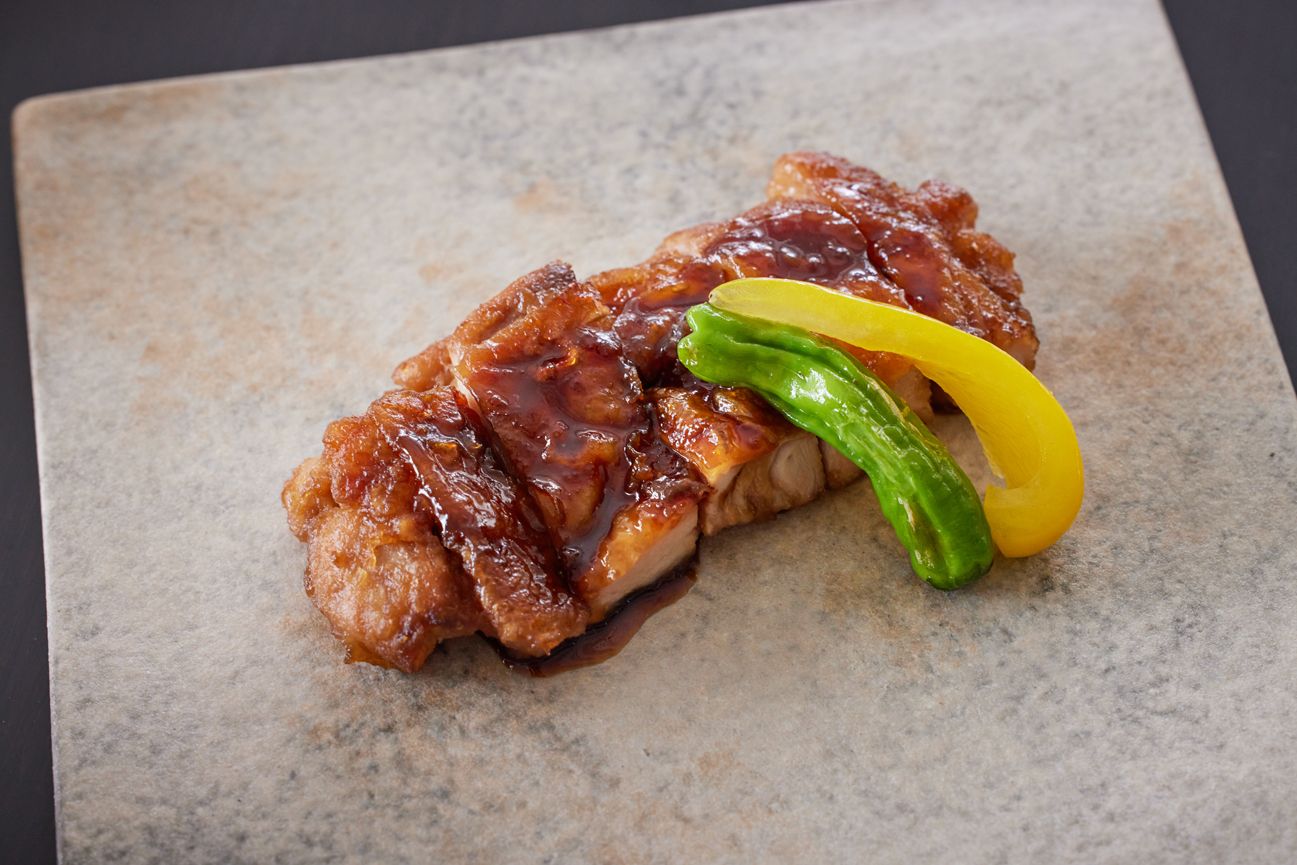
Chicken teriyaki grilled to a crisp and cooked in a mix of cooking sake, mirin, and soy sauce. Plenty of space is left on the plate, with vegetables to add color.

A side dish of sashimi-grade scallops served with a plum paste thinned with a mix of soy sauce and broth, all topped with shiso. The trick is to serve it in the shape of a cone in the center of a semi-small plate with depth to it.
In Japan, a country that stretches from north to south surrounded by the sea, a food culture in which people are quick to try local specialties and seasonal flavors has taken root. The best part about Japanese cuisine is getting to eat fish and vegetables in season, prepared in a way that makes the most of their natural flavors. Root vegetables, which are at their best from fall through winter, are used in a variety of dishes. Tonjiru pork miso soup, served with heaps of root vegetables like burdock root, daikon white radish, carrots, and leeks, is a staple of home cooking in winter. Sweet potatoes are also an essential part of winter used in a cornucopia of dishes, either cooked with rice, simmered, baked, or made into confectioneries.
Locally raised chicken meat from all across Japan is used in a multitude of dishes, but one of the most common household meals is chicken teriyaki. Thigh meat is coated in potato starch and slowly braised in a pan, then seasoned with a sweet and spicy mix of cooking sake, soy sauce, and mirin. It pairs well with rice, making it a favorite among both children and adults alike. For side dishes and smaller sides, focus on a combination of seasonal vegetables with nutritional balance in mind. Some staple sides that help change up the taste and texture of a meal include boiled spinach blanched in water, squeezed out, cut into bite-sized pieces and served with bonito flakes, as well as cucumbers and octopus rubbed in salt and dressed with vinegar and sugar.
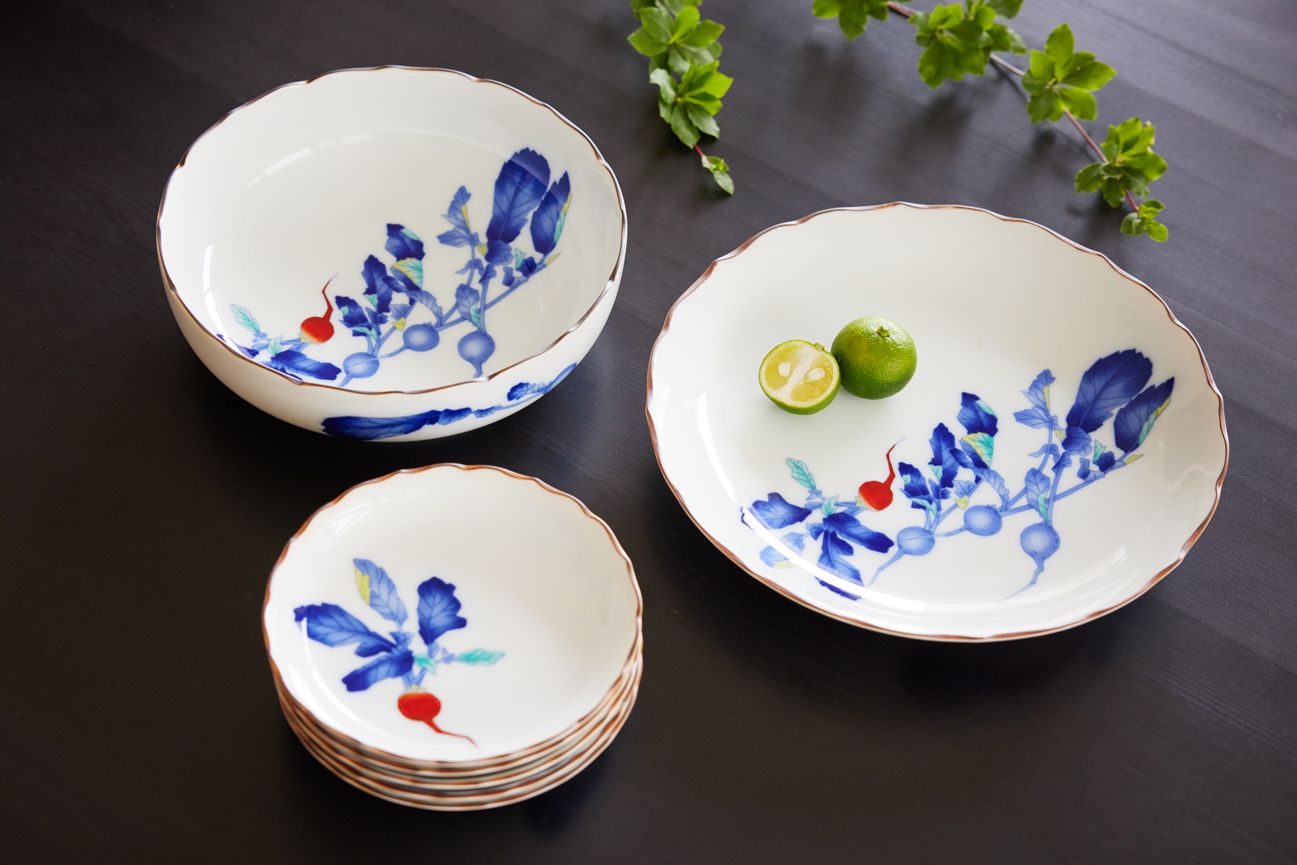
Matching decorative plates. A complete platter, large bowl, and small plate set will come in handy for entertaining guests.
There are a number of different materials used to make Japanese tableware, but ceramics and porcelain are the most common and familiar. Glazing and firing techniques first introduced from China and Korea long ago developed in their own unique way in Japan. Today, ceramic and porcelain-producing regions can be found throughout the country. Pieces are categorized as “ceramic,” “porcelain,” “earthenware,” or “stoneware” depending on the clay or pottery stone used for the raw material, whether or not they are glazed, and the temperature at which they are fired. They are selected depending on the type of dish and the season, with heavier pieces that offer greater heat retention recommended for simmering, deep-fried dishes, and hot pot-style meals eaten over an open flame. Thinner, translucent pieces, meanwhile, are used for sashimi or cold dishes.
Transparent glass pieces can be used not just to give off a refreshing cool effect in the summer, but throughout the year. Alongside drinking glasses and sake cups, a variety of glass plates and bowls are available for serving food as well. Desserts and fruit served in glassware after a meal can completely change the atmosphere at the table.
When selecting Japanese tableware, consider how the pieces will pair with food, starting with plain pieces to form a base and gradually introducing colors and patterns. The rich variety that Japanese tableware offers, with colored designs and patterns in red, green, blue, and yellow on a white background and unique textures produced by taking advantage of the characteristics of a region’s clay, make meals pleasing to the eye and all the more splendid.
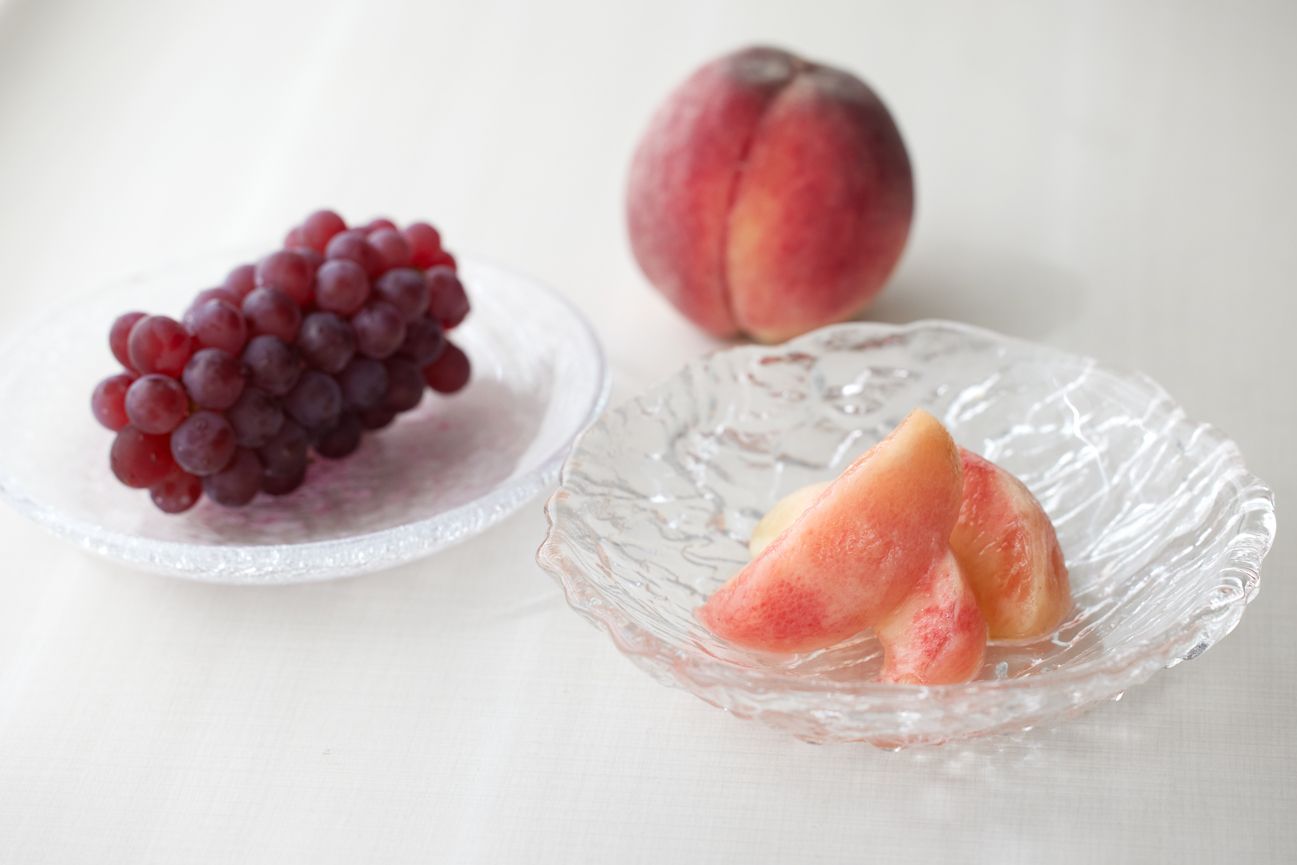
Seasonal fruit served in pieces of glassware that employ a variety of decorative techniques makes for a beautiful-looking dessert.

Small plates about 12 cm in diameter see a wide range of use not just for smaller sides but for serving soy sauce, condiments, and Japanese sweets. With such a variety of different patterns, it is a joy collecting them piece by piece.
Japanese tableware, with its abundant individuality, not only complements food beautifully but also offers the pleasure of appreciating its materials and patterns. When served in a creative way, the tableware helps make food all the more appetizing. On top of this, giving thought to how the colors of your food will go with your bowls and plates can transform everyday dining into a richer experience.
Try making and plating some real Japanese food and see just how good it looks and tastes!
Nikujaga (Japanese style beef and potato stew)
A classic homemade Japanese dish offering the right balance of meat and vegetables.
/en/recipes/detail/269.html
Spinach with soy sauce dressing
A simply prepared dish that brings out the delicious flavor of the spinach.
/en/recipes/detail/53.html
Tonjiru (Miso soup with pork and vegetables)
A soup packed with ingredients and full of nutrients! The ginger and miso are sure to warm you up.
/en/recipes/detail/634.html
Teriyaki yellowtail
This widely beloved sweet and spicy flavoring can be used for a multitude of foods.
/en/recipes/detail/29.html
(Profiles)
Yuko Hama (Dish selection / Supervision)
Food Space Designer. Involved in floral decorations, interior design, and table coordination. Offers consultations on tableware for traditional Japanese inns and restaurants, as well as planning and staging for parties and other events. In recent years, she has been researching the Saijiki, an almanac of seasonal words used in haiku, as well as Japanese life and culture, working to offer a lifestyle that is based on the fusion of Japanese and Western styles and highly spiritual design. TALK TCS Vice President and certified instructor. Author of numerous books.
https://hanakukan.jp
Instagram: @yukohama.hanakukan
Hanae Kaede (Cuisine)
Gained experience working in the kitchen at Michelin-starred restaurants in France before returning to Japan to study Japanese cuisine in earnest through a specialized course at the Tsuji Culinary Institute of Advanced Studies. Later, after working as a teacher at a cooking school and in product development, she opened her own cooking studio, Atelier Kafuné, in Tokyo’s Monzen-nakacho district. Also holds workshops teaching Japanese cooking to visitors and residents from abroad. Published a book of Japanese recipes in France. An English version was also later published.
https://www.kafune-tokyo.com
Instagram: @atelier_kafune
Reference: Washoku Japan
Text: Junko Kubodera; Photography: Aya Kawachi

